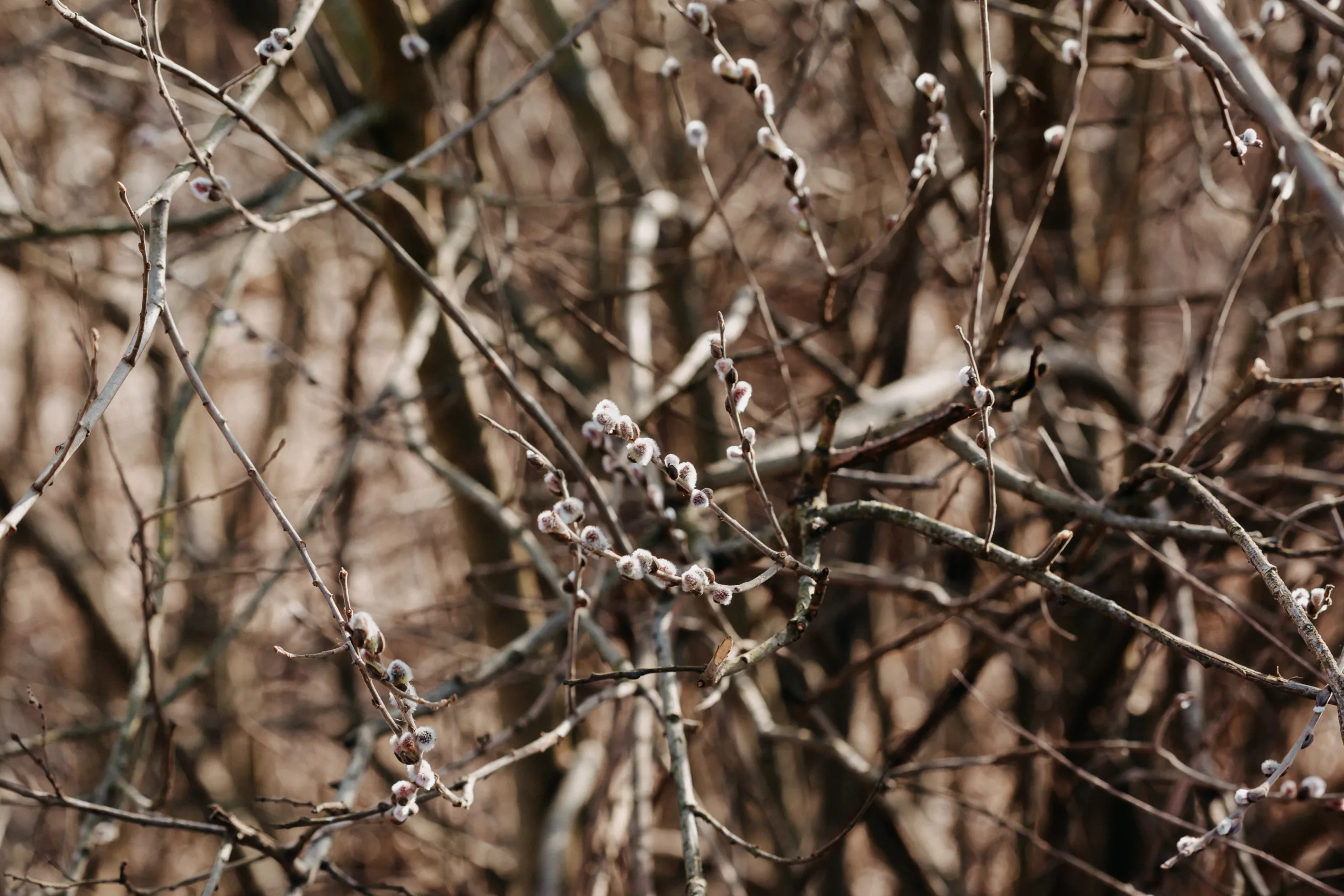Are you looking for an easy way to add beauty and privacy to your garden or outdoor space? Planting willow trees is a great way to do this; however, knowing how far apart to plant them can be tricky. This article will provide information on the best distance for planting willow trees, as well as other helpful tips for ensuring the health of your trees. With this knowledge, you can easily create a beautiful, lush landscape with the help of willow trees.
The advantages of planting willow trees are numerous. Willow trees are fast-growing and can provide quick shade, help reduce soil erosion, and act as a windbreak in windy areas. They also provide shelter and food for wildlife, filter pollutants from the air, and help to prevent flooding. Additionally, willow trees are drought tolerant, require little maintenance, and can survive in a variety of soil types.
Ideal Conditions for Growing Willow Trees
Willow trees are hardy and can be grown in a variety of climates and soils. However, it is important to provide the right conditions to ensure your willow tree grows healthy and strong. To maximize growth, willow trees should be planted in full sun, with a minimum of 6 hours of direct sunlight each day. The soil should be moist but well-drained with a pH between 6.0 and 7.5. Additionally, regular watering is important, especially during periods of drought or heat waves. An irrigation system can help ensure your willow tree receives the right amount of water each day.
Fertilization is also important for willow tree growth; an annual application of an all-purpose fertilizer can help promote strong growth and lush foliage. The best time to fertilize is in the early spring, when the tree begins to bud out. Pruning should also be done regularly to maintain the shape of the tree and remove any dead or diseased branches. Finally, mulching around the base of the tree helps retain moisture and keep weeds from competing for nutrients in the soil.
Spacing Requirements for Planting Willow Trees
When planting willow trees, it is important to consider the spacing requirements for them. Generally, willow trees have a wide spread when mature, so they need adequate space to grow. The recommended spacing between willow trees is between 8 and 12 feet (2.4 and 3.7 meters). When planting more than one tree in a row, the center of each tree should be at least this far apart to ensure proper growth and development. If the trees are planted too close together, they may compete for resources and suffer stunted growth or even die.
It is also important to consider the mature size of the willow tree when selecting a location for planting. Willow trees can reach heights of up to 40 feet (12 meters) when fully grown, so they should be planted in an area with plenty of room for them to spread out. Placing them too close to structures or other plants can lead to damage from falling branches or root competition resulting in poor growth.
Finally, it is important to take into account any other potential issues that may arise from planting willow trees in certain locations. For example, if the soil is not suitable or the drainage is poor, these factors should be taken into account before planting as they could adversely affect the health of the tree over time. Additionally, if there are nearby power lines or other obstacles that could interfere with the growth of the tree, these should be avoided as well.
Soil Preparation for Planting Willow Trees
Soil preparation is an essential step in planting willow trees. The soil needs to be well-drained, moist, and rich in organic matter. You can add compost or peat moss to the soil to improve its drainage and fertility. It’s also important to adjust the soil pH levels before planting. Aim for a slightly acidic pH of 6.0-6.5, as this is most suitable for willow trees. Additionally, you should loosen the soil around the planting area so that the roots can spread more easily.
You should also consider adding some mulch to the soil before planting willow trees. Mulch helps retain moisture and prevents weed growth in the area. Make sure to use an organic mulch such as wood chips or bark chips and spread it evenly around the base of the tree. This will help keep the soil moist and limit competition from other plants.
It’s important to make sure that your soil is suitable for planting willow trees before you get started. Test your soil’s pH levels and adjust if necessary, then add compost or peat moss for improved drainage and fertility. Lastly, don’t forget to add some mulch around the base of your tree for improved moisture retention and weed control.
The Best Time To Plant Willow Trees
Willow trees are popular for their ornamental beauty, fast growth rate, and their ability to thrive in both wet and dry conditions. For these reasons, they can make a great addition to any garden or landscape. But when is the best time to plant willow trees?
The best time to plant willow trees is in either late winter or early spring. This is when the soil is moist and temperatures are mild, allowing them to get off to a good start. It’s also important to note that willows do not transplant well, so it’s best to plant them as young saplings rather than mature trees.
When planting willows, be sure to choose a site that has plenty of sun and access to water. They prefer moist soils for optimal growth and should be planted in an area with plenty of drainage so that their roots don’t become waterlogged. If you live in an area with cold winters, be sure to select a variety of willow that can withstand the cold temperatures.
Once your willow tree has been planted, it’s important to provide it with proper care throughout the growing season. This includes regular watering and fertilization as well as pruning if needed. Make sure the soil around your tree remains moist but not soggy and that it receives at least 6 hours of sunlight each day for optimal growth.
By planting your willow tree at the right time of year and providing it with proper care and maintenance, you can ensure that it thrives for years to come. With its fast-growing nature and beautiful foliage, a willow tree can add beauty and value to any home or garden.

Watering Requirements for Growing Willow Trees
Willow trees require a lot of water, especially during the first few years of growth. The trees should be watered every week, and the soil should be kept moist but not soggy. During hot spells, you may need to water more frequently. If you live in a dry area, you can use mulch around the tree to help retain moisture in the soil. Additionally, you should avoid overwatering as it can lead to root rot and other diseases. When watering your willow tree, it is important to water at the root zone and not just from above. This helps ensure that the soil is evenly moistened and that the roots are getting enough water. You should also consider installing a drip irrigation system or soaker hose near your willow tree to ensure that it is getting adequate amounts of water.
Seasonal Maintenance of Planted Willow Trees
Willow trees are popular choices for landscape design, adding visual interest and texture to a garden or yard. While they require minimal maintenance, they still need seasonal care in order to stay healthy and thrive. Planting willow trees correctly and providing seasonal maintenance can help them grow strong and look beautiful.
The first step in caring for planted willow trees is to make sure they are planted correctly. Trees should be placed far enough apart so that the roots have room to spread out, but still close enough for them to receive the same amount of sunlight and water. The soil should be kept moist but not soggy, as too much water can cause root rot. Fertilizing with a balanced fertilizer once a year is also recommended.
During the growing season, it’s important to provide regular pruning and trimming of the tree’s branches. This will help promote even growth by controlling the tree’s shape and size. It’s best to prune during the winter when the tree is dormant, as this will minimize stress on the tree and encourage healthy new growth in spring.
In autumn, it’s important to inspect your willow tree for signs of disease or pests. If you notice any issues, treat them as soon as possible to prevent further damage or spread of disease. Additionally, raking up fallen leaves from around your willow tree can help prevent damage from rot or fungal infections.
Finally, it’s important to protect your planted willows from extreme weather conditions such as frost or strong winds by wrapping them in burlap or providing a windbreak with other plants or structures. Additionally, keep an eye out for any signs of stress caused by drought or flooding and take measures immediately if needed.
By following these simple steps for seasonal maintenance of planted willow trees, you can ensure that your trees stay healthy and beautiful year-round!
Pruning Requirements for Planted Willow Trees
Pruning willow trees is an important part of their maintenance, as it helps to keep them healthy and attractive. It also helps promote strong growth, allowing them to reach their full potential. Proper pruning can also reduce the risk for disease, pest infestations, and other problems. Pruning should be done when the tree is actively growing and after it has become established in its new location.
To begin pruning a willow tree, it is important to assess the overall shape of the tree and determine which branches need to be removed. Branches that are dead or diseased should be removed as soon as they are noticed. These branches can spread disease throughout the tree if left untreated. Branches that cross or rub against each other should also be removed in order to prevent further damage.
When removing branches, cuts should be made at a 45-degree angle just above a healthy bud or lateral branch. Care should be taken not to remove too much of the canopy at one time, as this can shock the tree and slow its growth. It’s also important to avoid leaving any stubs after cutting a branch, since this could result in decay or disease entering the tree through the exposed area.
In addition to regular pruning, willow trees may need special attention during times of extreme weather conditions such as drought or heavy rains. During periods of drought, additional watering may be necessary to help keep the tree hydrated and healthy. During periods of heavy rains, limbs may become heavily weighed down by large amounts of water; these limbs should be pruned in order to reduce stress on the tree and prevent damage from occurring.
Overall, proper pruning can help keep your planted willow trees looking their best while ensuring they remain healthy and strong for years to come!

Conclusion
Willow trees are great additions to any landscape, providing a lovely and unique look. When planting willow trees, it’s important to keep in mind the spacing needed between each tree. Planting too close together can cause overcrowding and competition for resources, leading to unhealthy trees. Generally, willow trees should be planted at least 10 feet apart in order to ensure that their roots have adequate space and access to water and nutrients. Additionally, taller varieties of willow should be planted further away from each other as they can grow quite large and take up a lot of space.
With the right care and attention, willow trees can thrive in your landscape for many years! With adequate spacing between plants, you can create a beautiful backdrop that is sure to impress friends and family alike.
So when thinking about how far apart to plant your willows, remember that proper spacing is essential for a healthy tree population. With some patience and planning, your landscape can become a stunning oasis of beautiful willows!

My interest in trees started when I first saw the giant sequoias in Yosemite.
I was a teenager then, and I remember thinking, “I need to learn more about this.”
That moment stuck with me.
A few years later, I went on to study forestry at Michigan Tech.
Since graduating, I’ve worked in a mix of hands-on tree care and community education.
I’ve spent over ten years helping people understand how to plant, maintain, and protect the trees in their neighborhoods.
I don’t see trees as just part of the landscape.
They are living things that make a real difference in our daily lives.
